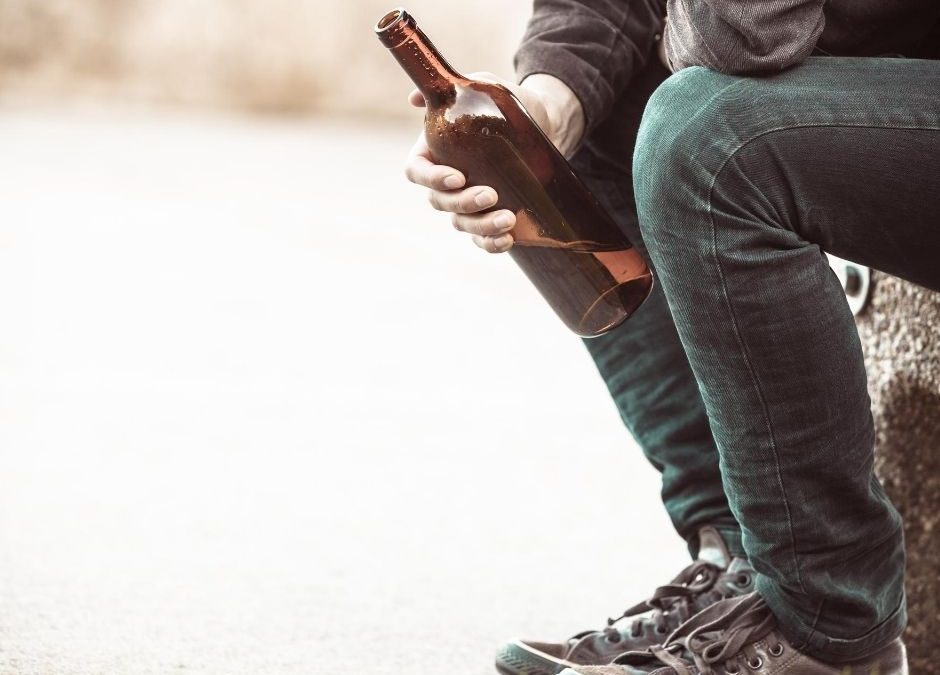Recently, my curiosity was piqued when I came across an article about a TikTok trend. For this trend, teens use their protective facemasks along with other props to disguise themselves as senior citizens. This disguise allows them to trick store workers into selling them alcohol without being carded. The posts are meant to be funny for the pranksters and their social media friends and followers. Yet I am curiouts how many of these teens are using alcohol as a way to bring temporary relief to the stress they have because of the pandemic. What concerns me greatly is that while alcohol might bring them a brief sense of relief, drinking during COVID-19 can lead to serious consequences for teenagers who are at higher risk for addiction.
This TikTok trend is just one example of the toxic joke culture around alcohol consumption among young people, who often fail to appreciate the serious and sometimes deadly consequences of underage or risky drinking. To me, the popularity of the posts also suggests that many young people are making unhealthy choices when it comes to alcohol at this time.
The Reality of Problem Drinking During a Pandemic
Historically, we see substance use numbers spike during a crisis. Reports from medical and mental health professionals — who are seeing increased visits to emergency rooms and drug overdoses — indicate that the coronavirus pandemic is no different. While it is too soon to definitively know the effects of the health crisis on drinking patterns, a study by the Nielson Corp. shows that between March and June alcohol sales in the U.S. climbed 26 percent compared to a year ago.
I have personally seen a steep rise in alcohol use among my young clients. Many have shared with me they started drinking heavily to numb themselves to the stress of this pandemic. They are also noticing they need alcohol just to feel normal or to avoid withdrawal. These are concerning symptoms of alcohol dependence that have begun in a space of a few short months.
Even before COVID, the National Institute on Alcohol and Alcoholism called “underage drinking a serious public health problem in the United States.” Alcohol is the most widely used substance of abuse among young people, with more adolescents consuming alcohol than cigarettes or marijuana. In 2018, 7.1 million young people ages 12–20 reported that they drank alcohol beyond “just a few sips” in the past month and 4.3 million young people reported binge drinking (at least once in the past month). According to the Centers for Disease Control and Prevention (CDC), alcohol is a factor in the deaths of more than 4,000 young people under the age of 21 each year.
But life during COVID creates the perfect recipe for underage drinking. Their normal venues for social interaction have become severely limited. They are bored, anxious, and spending countless hours online and on social media to fulfill their need for social interaction. All this during the developmental stage of life when teens have a increased need for social interaction. The good news is that parents and trusted adults can have a significant impact on the choices teens make.
What Can Parents Do
The organization Talk it Out provides some practical recommendations about how parents can be proactive in preventing underage drinking.
- Keep alcohol out of the house or locked up so that youth cannot access it.
- Keep a log of how much alcohol is in the house, so that if any goes missing you can be aware.
- Talk to your kids about the dangers of underage and and establish both rules and consequences about alcohol.
- Talk to your kids about the importance of social distancing and to avoid parties or gatherings.
- Stay connected; check in with your children, know their friends.
- Never provide youth with alcohol, even under your supervision.
- Do not drink excessively in front of youth; you are their role model.
If you suspect that your child may be using alcohol – changes in behavior, smell of alcohol on their breath, slurred speech, etc. – take action now. Alcohol use is a slippery slope for kids because their young brains are more susceptible to addiction. Professional intervention early can reduce the risk of more serious issues, including substance use disorder.
Young adults are the demographic that has the highest need for treatment due to risky drinking behaviors that are prevalent during this stage of life. They also have the worst access to care. The number of young adults needing treatment exceeds the the number of addiction professionals who trained to treat this age group. I am here to help. Please contact me if you have questions or concerns about your teen or young adult and how to get them the professional interventions they might need.

